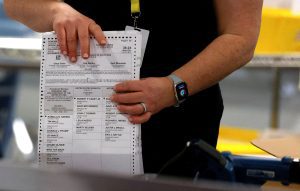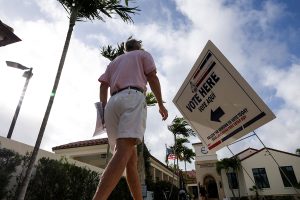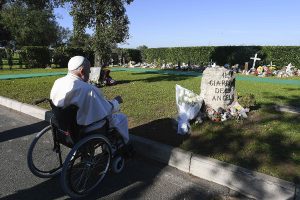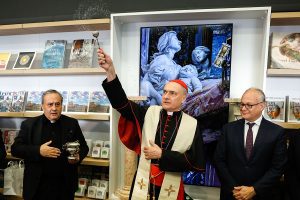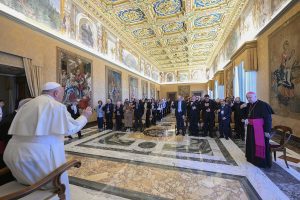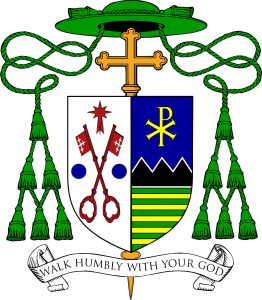ROME (CNS) – The Vatican secretary of state said his prayer for Donald J. Trump is that God would grant him wisdom “because that is the main virtue of those who govern according to the Bible.”
Cardinal Pietro Parolin, the secretary of state, spoke briefly to reporters Nov. 7 outside Rome’s Pontifical Gregorian University.
Asked about Trump’s victory Nov. 5 and looking toward his second term as president, Cardinal Parolin said, “I think he has to work above all to be president of the whole country and therefore overcome the polarization that has occurred and is very evident.”
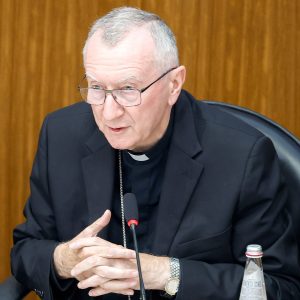
“We also hope he can be a factor for détente and pacification in the current conflicts that are bloodying the world,” the cardinal said. “He said he will end the wars. Let’s hope so. But, of course, he doesn’t have a magic wand either.”
As for Trump’s repeated vow to “launch the largest deportation program in American history” and to severely limit all immigration, Cardinal Parolin said the Vatican supports a comprehensive and “wise policy toward migrants so that it does not go to these extremes.”
Pope Francis has recognized the right of nations to regulate immigration but also has insisted those policies promote an attitude of welcoming people seeking safety and a better life, accompanying them as they settle in and helping them integrate. Cardinal Parolin told reporters, “I think this is the only way to deal with the problem and to solve it in a humane way.”
The cardinal said he is not worried that U.S.-Vatican relations will suffer under Trump’s leadership. “We maintained relations with the president during his previous term and will continue to do so.”
“As always,” he said, “there are elements that bring us closer and elements that differentiate and distance us, and this will be an opportunity to exercise dialogue and to try to find more points of consensus for the benefit of the common good and world peace.”
Opposition to abortion is one common position, and Cardinal Parolin said he hoped Trump would work on a broader understanding of the defense of human life and do so in a way that will bring people together “and not let it again become a policy of polarization and division.”
Cardinal Parolin was at the Gregorian University to address a conference marking the 75th anniversary of the Geneva Conventions, looking specifically at the impact of artificial intelligence on international humanitarian law, particularly in conflict situations.
The development of artificial intelligence shows just how creative human beings can be, but the technology must always be under human control, he said.
Machines cannot make moral decisions, and those decisions are critical in situations of war and violence, Cardinal Parolin told the conference, which is why the Holy See strongly supports an international treaty governing the use of Lethal Autonomous Weapon Systems.
“We cannot allow life and the future of anyone to be determined by an algorithm,” he said.

